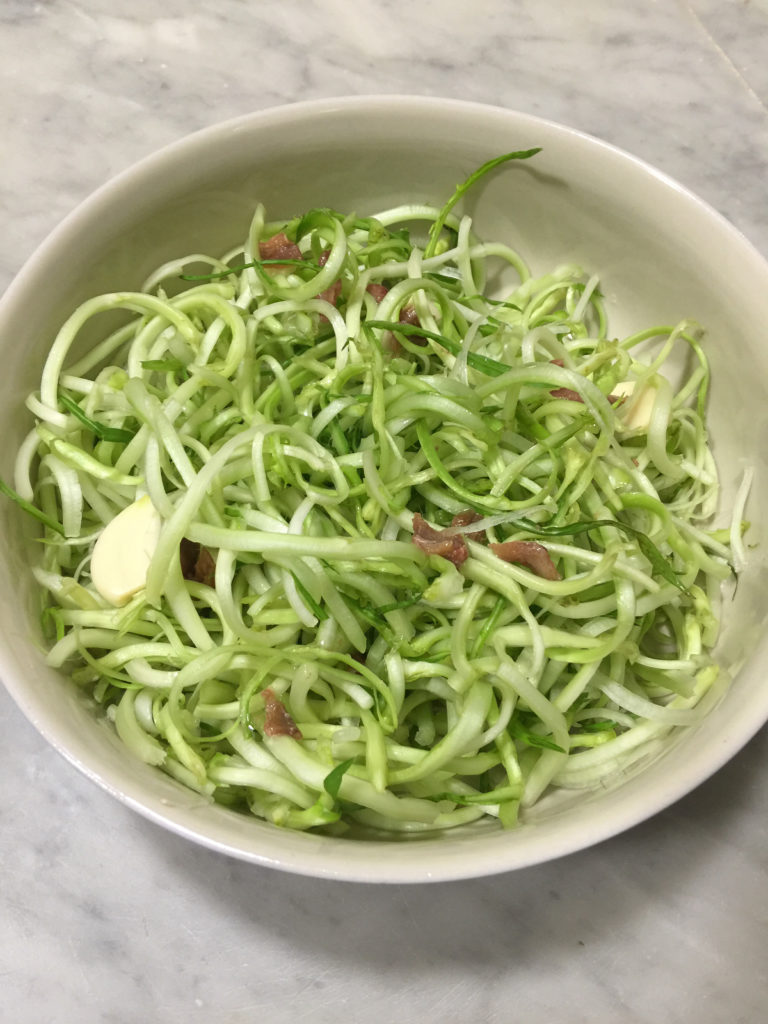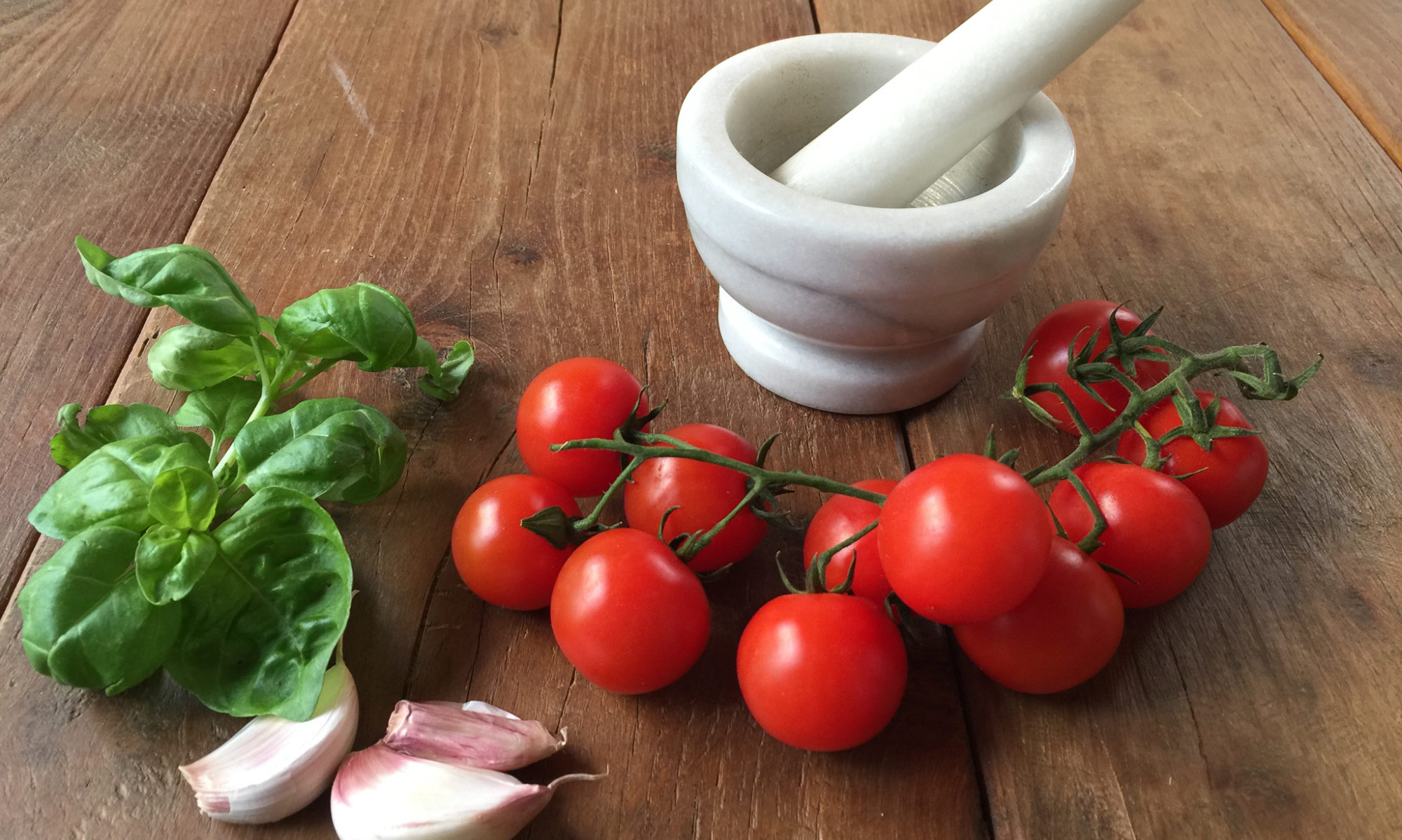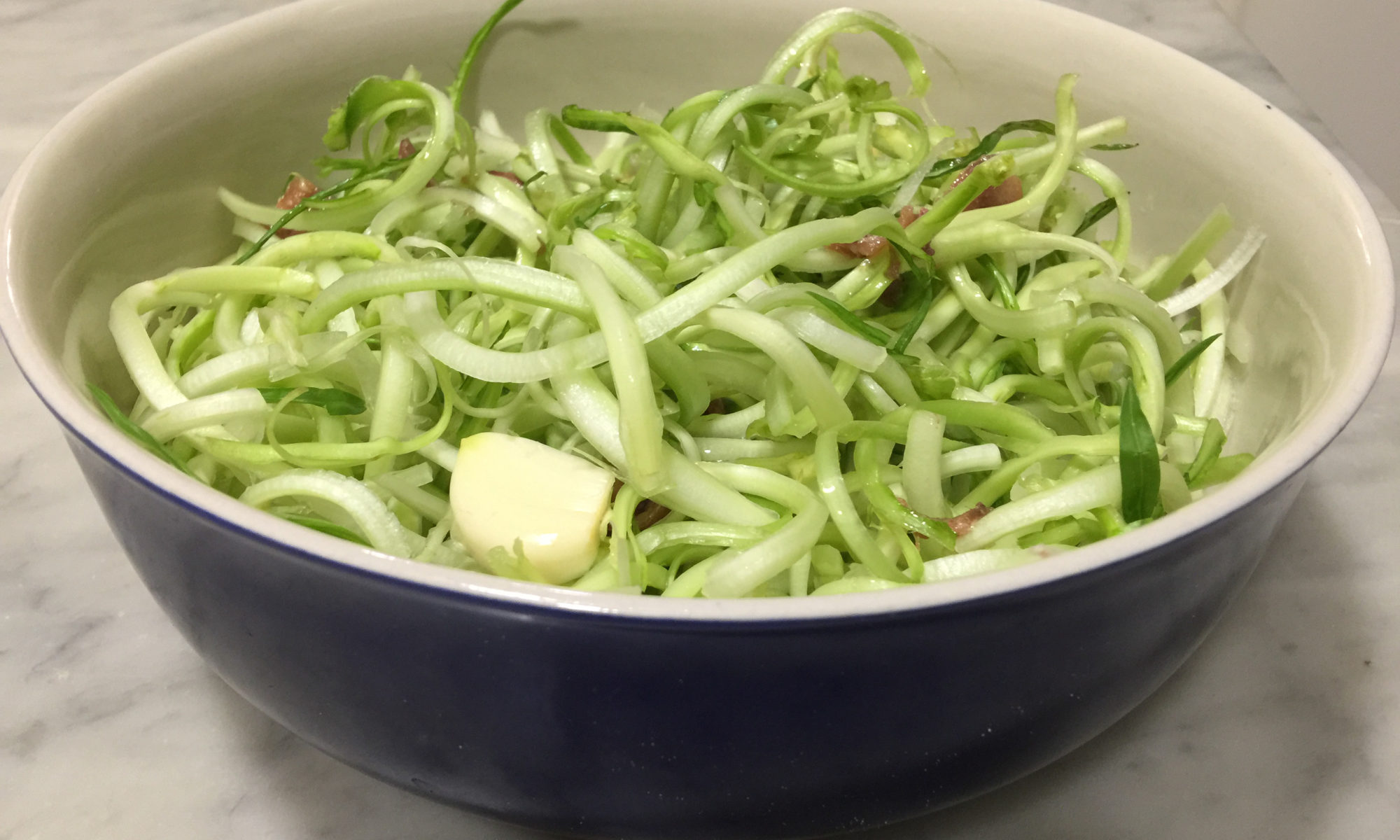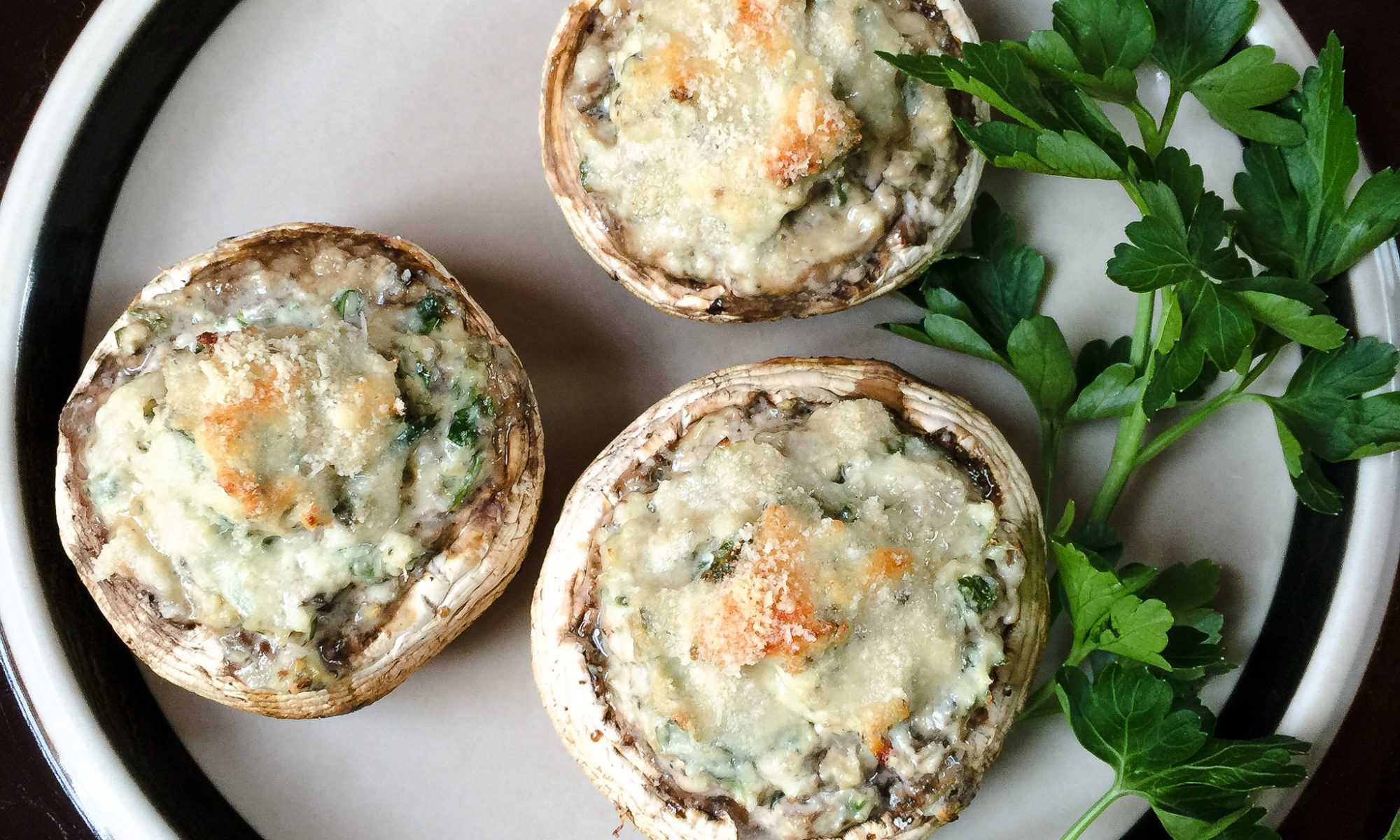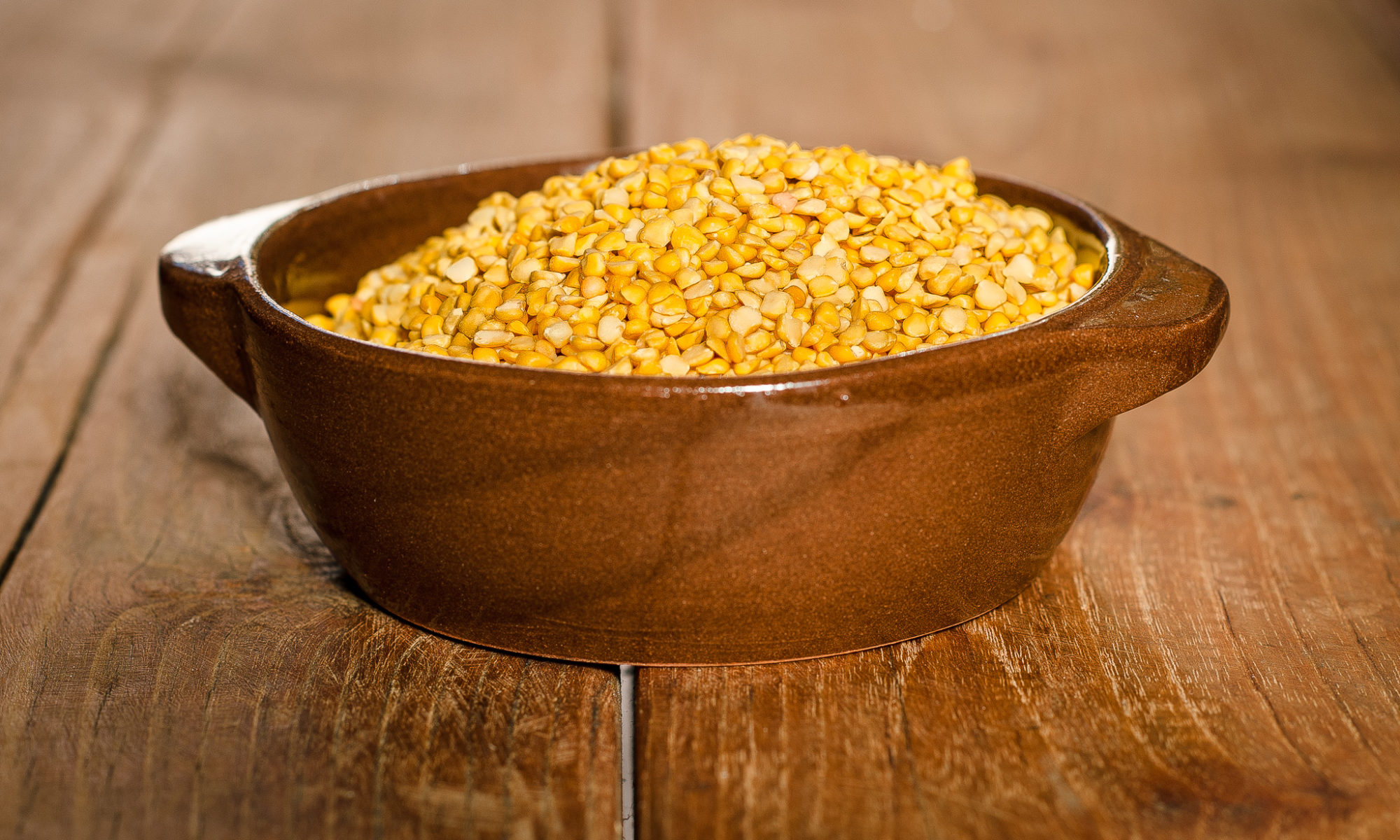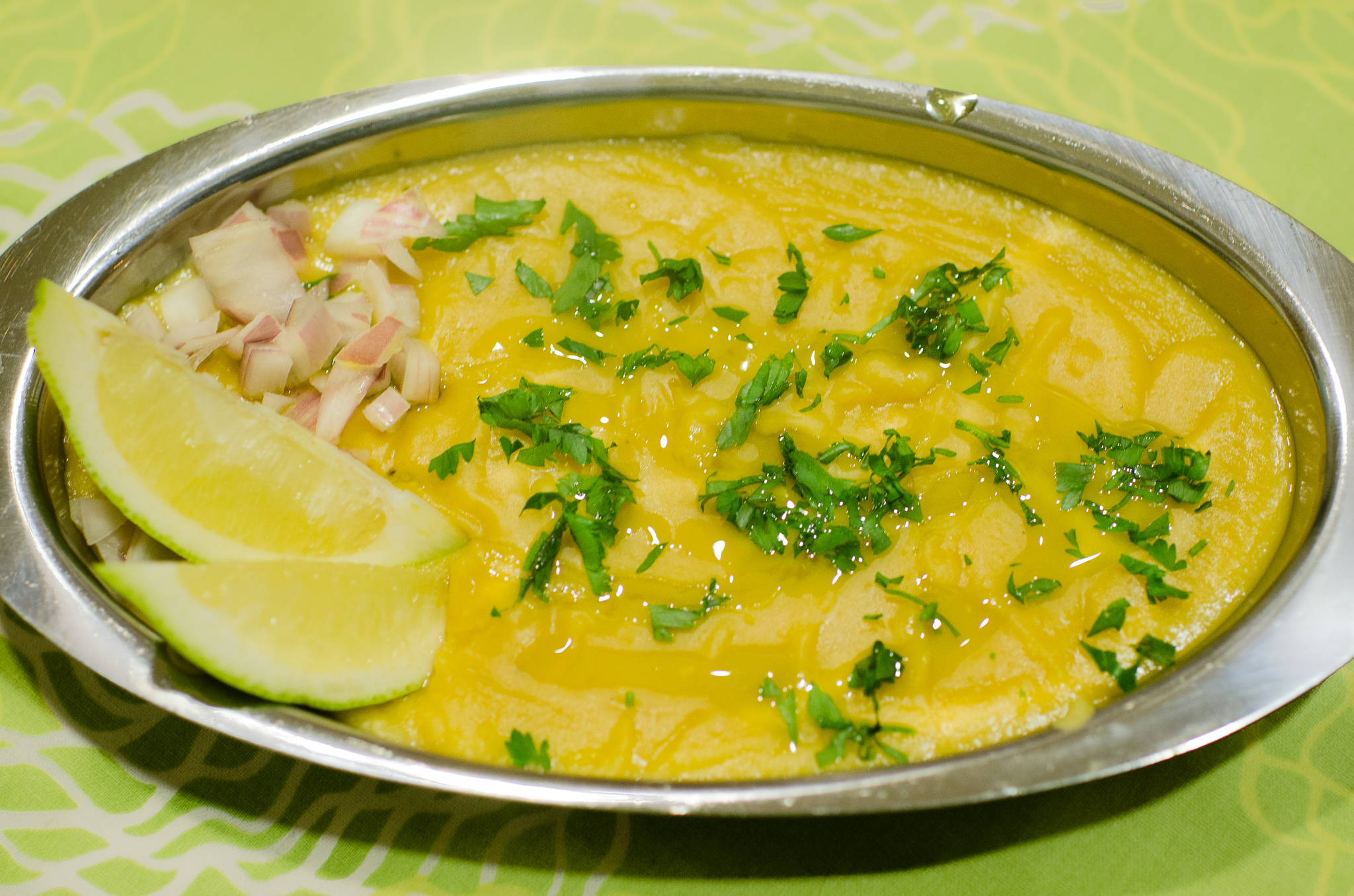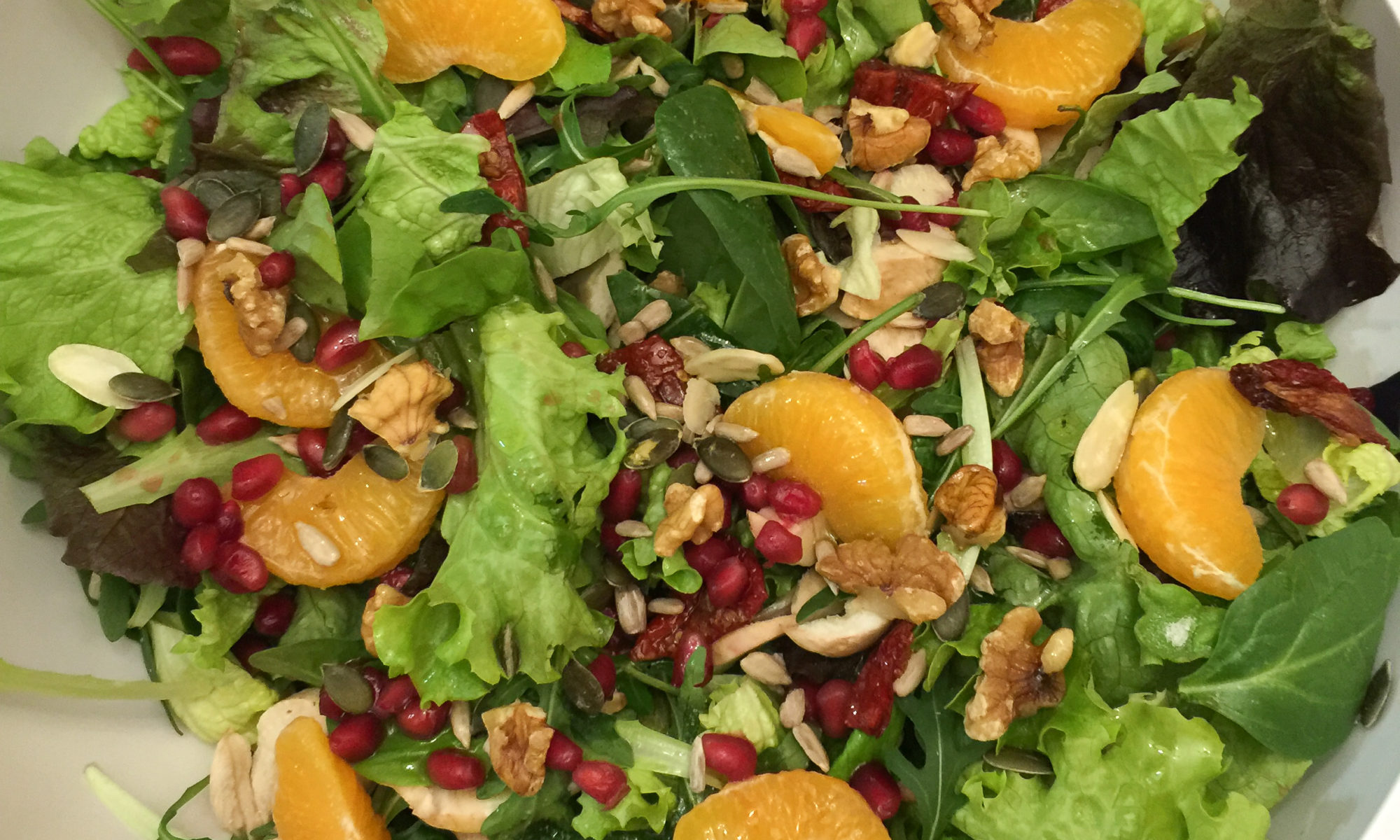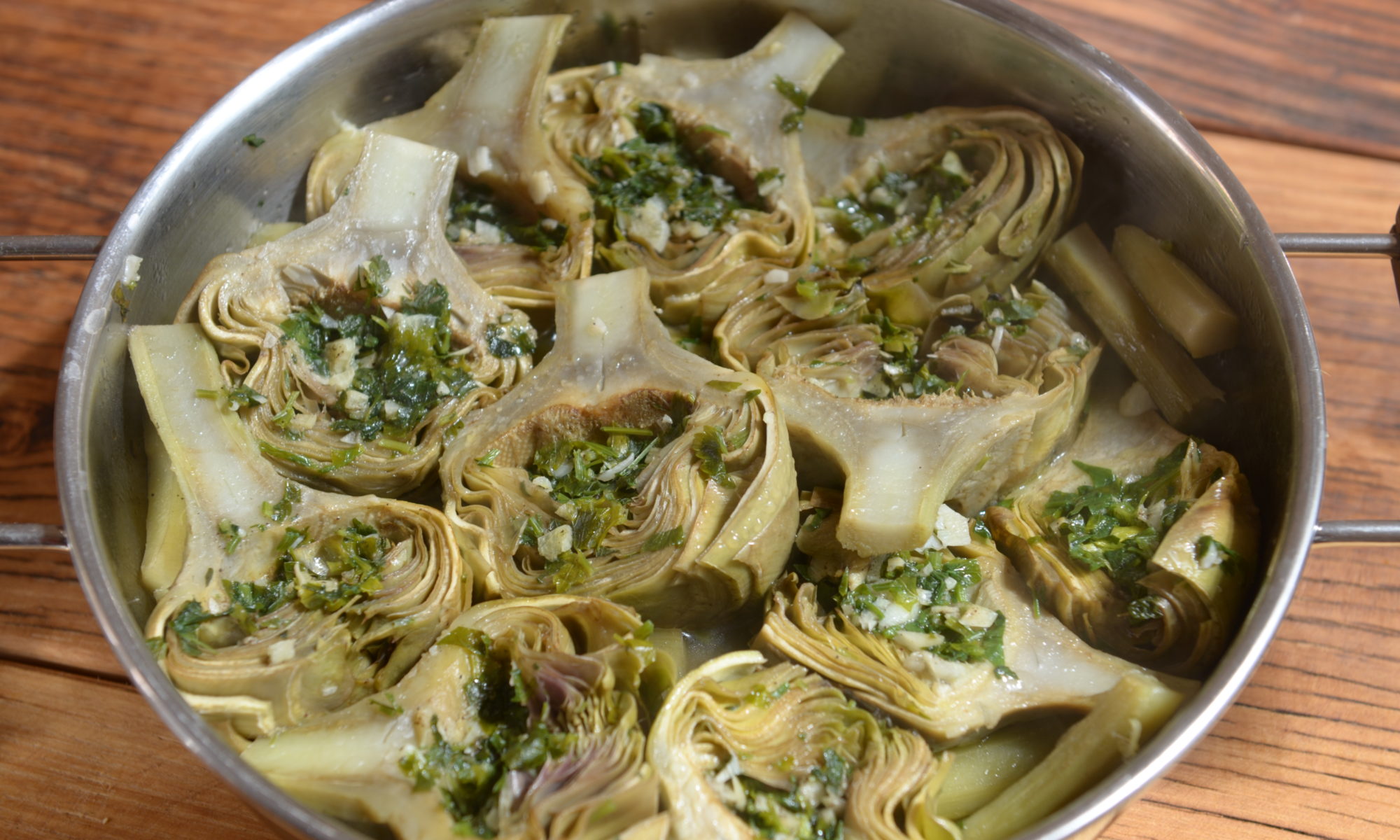I love carciofi alla romana : cleaned, trimmed, seasoned liberally with mint and parsley, and cooked.
A fresh Roman artichoke is a wonderful thing. The first ones to hit the stands – the cimaroli – are big and fat. They are the ones that grow from the main stalk of the artichoke plant, in early spring, pointing straight up. Not only are they incredibly fragrant and large, they are also amazingly tender, and have practically no choke (fine, fuzzy hair like filaments) or tough inner leaves. They are also quite expensive. Fortunately we find artichokes almost all year round in Rome so I don’t have to wait for their best season to enjoy them.
This is not a difficult recipe but it’s a bit time consuming especially the first time, but so worth your while.
Prep time 30 min Cook time 30 min
INGREDIENTS FOR 4-5
- 4 artichokes
- a bunch of parsley
- a bunch of mint (mentuccia)
- 4-5 garlic cloves
- salt and pepper
- 1 lemon
- extra vergin olive oil
1. Fill a big bowl with cold water and squeeze half a lemon in. Keep the other half handy. Artichokes oxidize quickly, so you have to rub all cut surfaces with a lemon to prevent this. And if you don’t use gloves, you can rub your hands with lemon afterwards.
2. Take a bunch of parsley and a bunch of mint and 4-5 cloves of garlic. Chop finely and add 1/2 tsp of salt and about a 1/4 tsp of freshly ground pepper. (not exact measures)
3. Break off the tough, outer leaves of the artichoke, until you get down to the tender inner leaves. They are usually yellow on the bottom third, and pale violet at the top. When you break off the leaves, do your best to leave on as much of the root of the leaf as possible.
4. Once you have taken off the tough outer leaves, use a small knife and gently trim away the bright green parts from the stem. Turn the artichoke on its side, and cut off the top third (the pointy end of the artichoke). Make sure your knife is really sharp. Immediately rub the cut part with lemon, and immerse it in acidulated water. You can also halve the artichoke and remove the choke like I have done in the photo.
5. Lift an artichoke out of the water and hold it with one hand, and carefully loosen the leaves, being careful not to break any off. Take a bit of the herb mixture and force it in between the leaves, and into the center of the artichoke. Keep doing this, until the artichoke is well seasoned. You want to use about 2 teaspoons of mixture per artichoke. Repeat for all the artichokes.
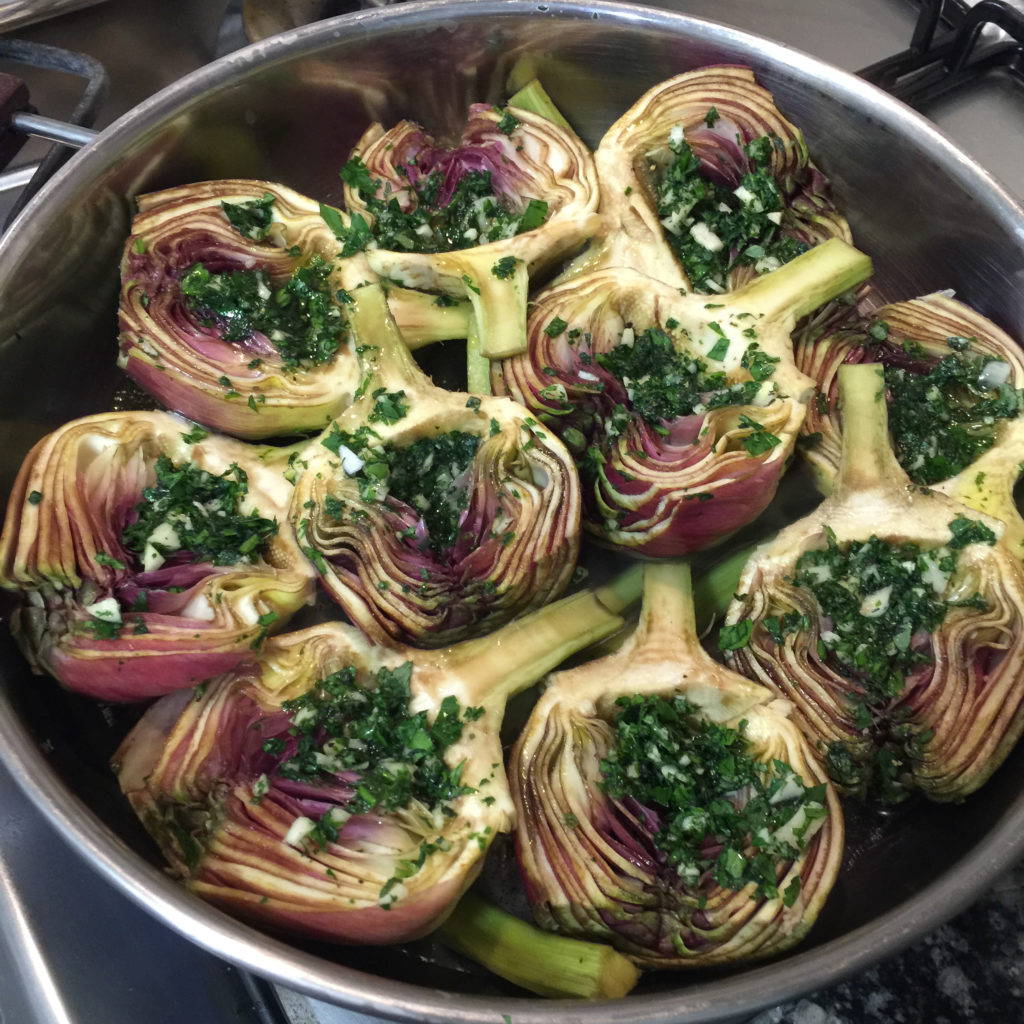
6. Choose a pot where the artichokes will fit very snugly, and place them, one against the other, with the tops (where the pointy end was) down or cut the artichokes in halves like I did and cook them side by side. If the stalks are big and thick, you can use those trimmed of the tough outer part to keep the artichokes from tipping over. In any case don’t throw the stalks away but use them. They are yummy too. Otherwise, you can use pieces of potato. Pour in about 2-3cm (an inch) of water but be careful not to pour the water directly onto the artichokes. Sprinkle with salt and pepper, and drizzle abundantly with olive oil. Place the lid on the pot and bring to a low simmer. Cook until done about 20-25 minutes. Keep checking to make sure the water hasn’t boiled away.
7. Let cool. Best served at room temperature.
BUON APPETITO!

